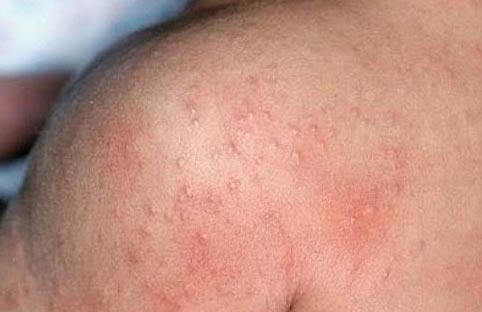Heat Rash/Prickly Heat: Symptoms, Prevention, Treatment - Explained by Dr. Yeung Ho Hong(楊浩康)

Symptoms and Types of Heat Rash
Heat rash, also known as prickly heat, is commonly seen during hot weather; however, it can also occur in cooler conditions when an infant becomes overheated—for example, by wearing too many layers of clothing.
Causes of Heat Rash
This condition arises because newborns’ sweat glands are not yet fully developed. When the ambient temperature is high or if the infant is dressed in heavy clothing, sweat produced by the body may not evaporate quickly enough and can accumulate on the skin. This trapped sweat clogs the pores and triggers a localized inflammatory response. The resulting irritation typically appears on the neck, back, chest, and in other areas where the skin tends to fold. In these affected regions, the skin may turn red and cause a mild prickling sensation or discomfort.
Based on the depth of skin involvement and the degree of inflammation, heat rash is generally classified into two main types:
- Crystalliform Sweat Rash (Superficial): This form of heat rash is very superficial and is characterized by almost transparent, minute vesicles. These tiny blisters are delicate and burst easily upon gentle touch. They are not usually associated with significant inflammation, so the symptoms are mild and unlikely to cause noticeable discomfort in the infant.
- Red Sweat Rash (Deeper with Inflammation, Most Common): In this type, the rash appears as small red spots. In some cases, the centers of these spots may form small pustule-like structures. This variety is accompanied by more noticeable inflammation, which can lead to mild pain or itching, indicating that the deeper layers of the skin are more markedly affected.
The care and prevention of heat rash
Proper management of heat rash begins with measures to reduce the body temperature and minimize sweating. Parents are advised to gently cleanse the infant’s skin with plain water—paying special attention to areas that tend to sweat heavily such as the neck, back, and chest. After washing, the skin should be patted dry with a soft towel instead of being rubbed vigorously; this helps prevent further irritation or damage to the delicate skin. In terms of clothing, it is important to dress the infant in light, breathable garments that are appropriate for the current temperature. Avoiding overly heavy or excessive layers can help prevent overheating. Additionally, ensuring that the living environment is well-ventilated—using air conditioning or a fan when necessary—can help maintain a cool and dry room, thereby reducing the risk of sweat accumulation.
Furthermore, the careful use of infant skincare products can contribute to the management of heat rash. Products that are free of fragrances and alcohol, such as gentle moisturizers or talcum powders specifically formulated for babies, can help absorb excess moisture and reduce skin irritation. However, parents should take care to review the ingredients of these products and, if possible, consult a healthcare professional before use to avoid any potential allergic reactions or other side effects. It is also important to refrain from excessive friction or scratching, as this may compromise the skin’s natural barrier and elevate the risk of secondary infections.
In most cases, as the environmental temperature drops or the infant’s body temperature returns to normal, heat rash tends to improve on its own within a few days, obviating the need for invasive treatments. Nevertheless, if parents observe that the infant’s condition worsens—manifesting in severe redness, significant swelling, the development of open sores, or if the infant begins to experience fever and overall discomfort—it is imperative to seek medical attention promptly. Early intervention allows healthcare professionals to provide appropriate treatment and to help prevent the condition from deteriorating further.
In summary, proper care and maintaining a suitable environmental temperature are key to both preventing and alleviating heat rash in infants. Parents should closely monitor their child’s skin condition and implement effective precautions, such as keeping the skin cool and dry, and selecting clothes that reduce the likelihood of overheating and excessive sweating. Should the rash persist or if the infant exhibits signs of worsening condition, timely consultation with a healthcare provider is essential to ensure the continued health and comfort of the baby. By following these guidelines, parents can help their infants remain comfortable, minimize discomfort caused by heat rash, and significantly reduce the risk of further complications.
